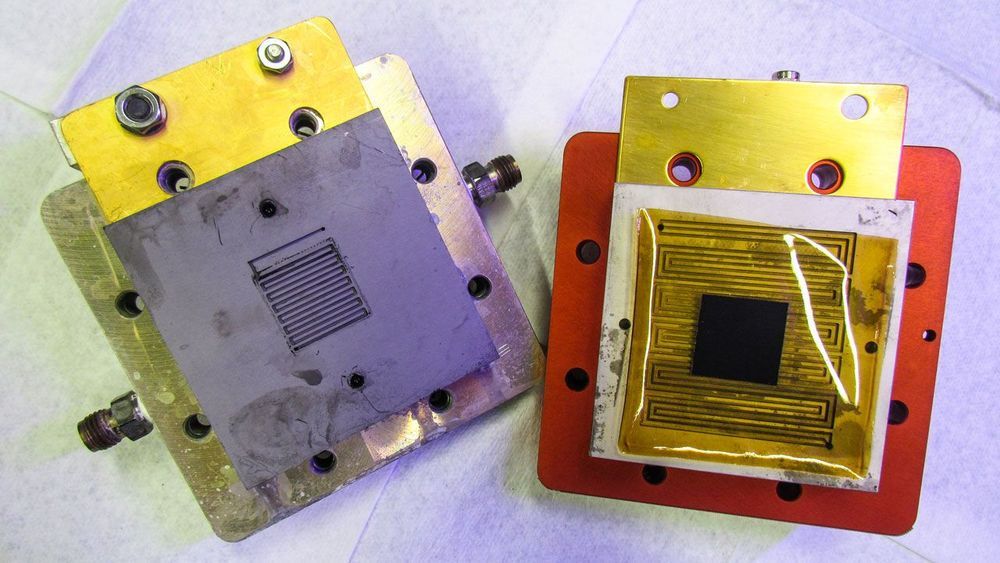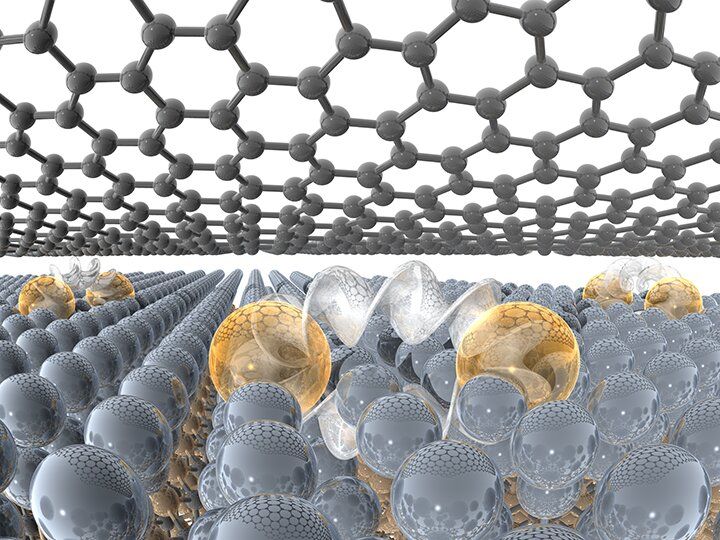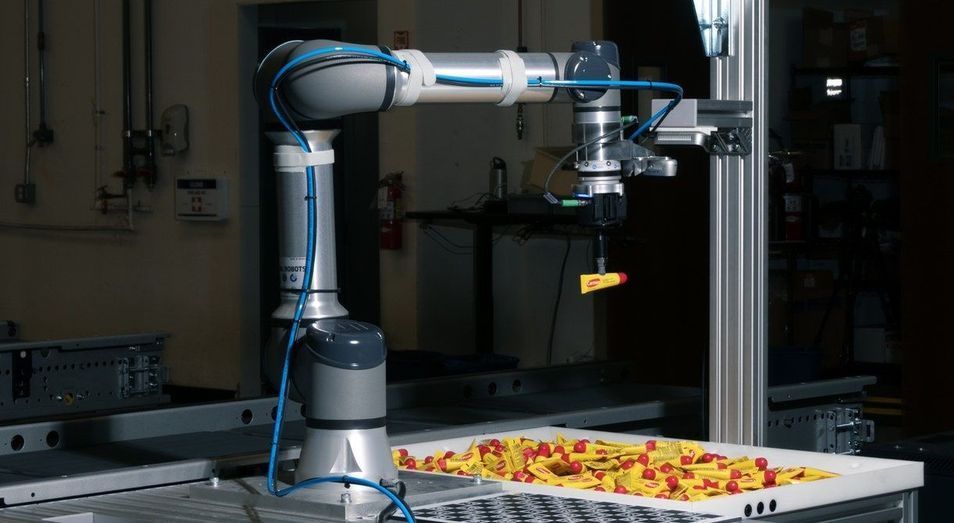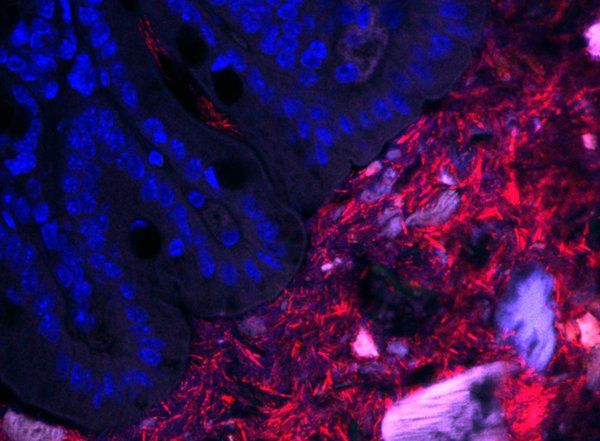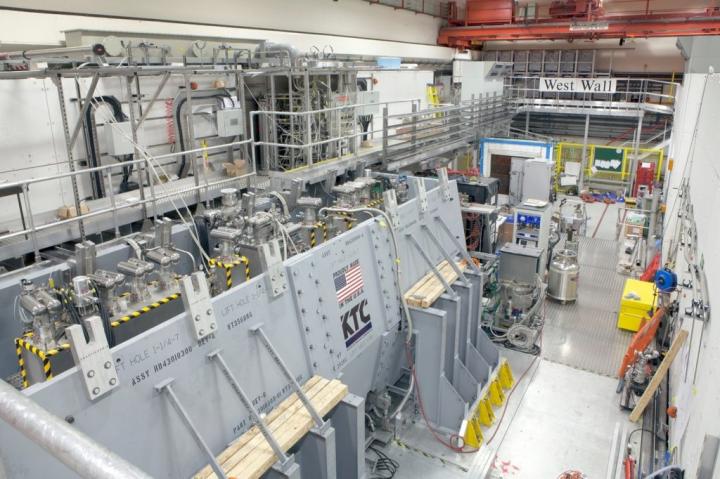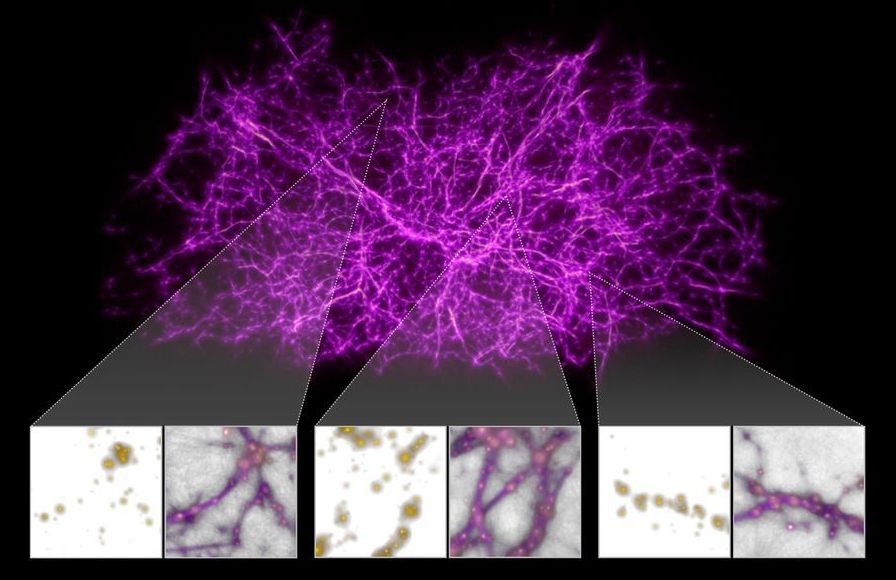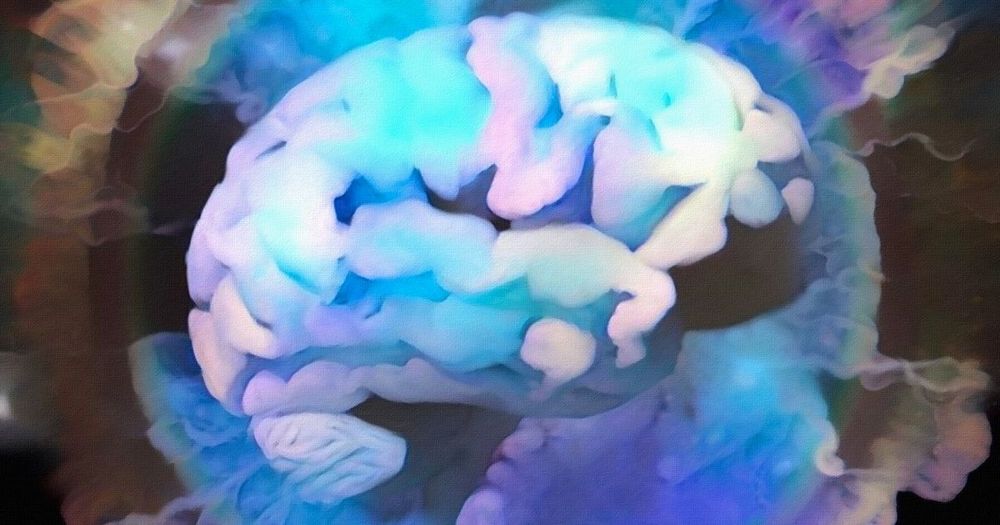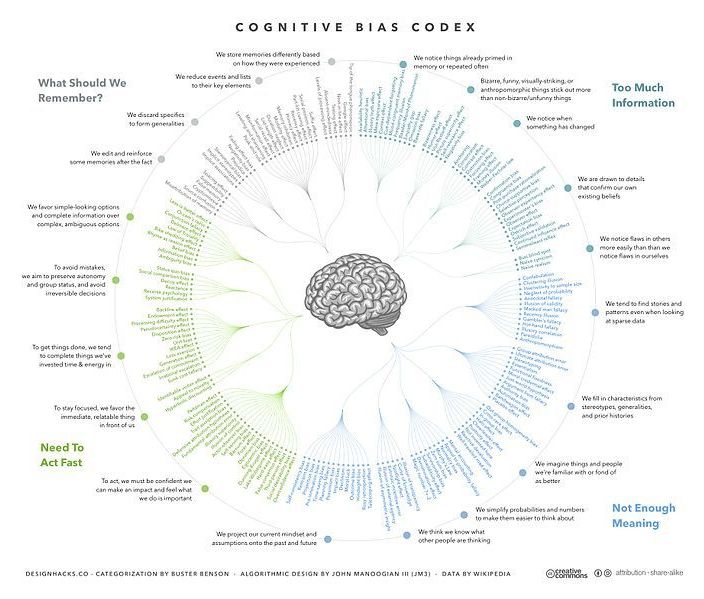Page 7773
Mar 11, 2020
Two-dimensional metals open pathways to new science
Posted by Genevieve Klien in categories: quantum physics, science
An atomically thin materials platform developed by Penn State researchers in conjunction with Lawrence Berkeley National Lab and Oak Ridge National Lab will open a wide range of new applications in biomolecular sensing, quantum phenomena, catalysis and nonlinear optics.
“We have leveraged our understanding of a special type of graphene, dubbed epitaxial graphene, to stabilize unique forms of atomically thin metals,” said Natalie Briggs, a doctoral candidate and co-lead author on a paper in the journal Nature Materials. “Interestingly, these atomically thin metals stabilize in structures that are completely different from their bulk versions, and thus have very interesting properties compared to what is expected in bulk metals.”
Traditionally, when metals are exposed to air they rapidly begin to oxidize—rust. In as short as one second, metal surfaces can form a rust layer that would destroy the metallic properties. In the case of a 2-D metal, this would be the entire layer. If you were to combine a metal with other 2-D materials via traditional synthesis processes, the chemical reactions during synthesis would ruin the properties of both the metal and layered material. To avoid these reactions, the team exploited a method that automatically caps the 2-D metal with a single layer of graphene while creating the 2-D metal.
Mar 11, 2020
These Industrial Robots Get More Adept With Every Task
Posted by Genevieve Klien in categories: Elon Musk, robotics/AI
Vicarious, a secretive 10-year-old startup backed by Mark Zuckerberg, Elon Musk, and Jeff Bezos, reveals its progress and an initial customer.
Mar 10, 2020
Mapping Bacterial Neighborhoods in the Gut
Posted by Xavier Rosseel in categories: biotech/medical, genetics, neuroscience
Over many years, the Mazmanian laboratory has described how Bacteroides fragilis in the gut produces beneficial molecules that protect mice from inflammatory bowel disease and autism-like symptoms. Like a densely populated city, a vast majority of the B. fragilis in the gut live within the central part of the intestinal tube, called the lumen. However, the Mazmanian laboratory discovered in 2013 that some B. fragilis reside in the bacterial equivalent of small towns, nestled into microscopic pockets within the tissue walls lining the tube. These sparse populations are protected by mucus and are largely unaffected by antibiotics, suggesting that they act as population reservoirs that ensure long-term colonization.
“For humans, where we live can dictate how we behave—for example, a person living in a city likely has a different everyday life than a person living in a small rural community,” says former graduate student Gregory Donaldson (PhD ‘18), the first author on the new paper. “For the bacteria that we study, the intestines represent their entire world, so we wanted to know how differently they behave depending on how far away from the intestinal surface they are.”
Though they may live in different habitats within the gut, these B. fragilis populations all have the same genetic code. What may differ, however, is how they express those genes—is a bacterium expressing a gene for replication and division, for example, or perhaps for an enzyme that digests food? Donaldson aimed to measure and compare gene expression in these two populations (intestinal wall tissue and lumen of the gut) to determine what, if any, differences were seen.
Continue reading “Mapping Bacterial Neighborhoods in the Gut” »
Mar 10, 2020
Breakthrough made towards building the world’s most powerful particle accelerator
Posted by Genevieve Klien in categories: innovation, particle physics
An international team of researchers, affiliated with UNIST has for the first time succeeded in demonstrating the ionization cooling of muons. Regarded as a major step in being able to create the world’s most powerful particle accelerator, this new muon accelerator is expected to provide a better understanding of the fundamental constituents of matter.
This breakthrough has been carried out by the Muon Ionization Cooling Experiment (MICE) collaboration, which includes many UK scientists, as well as Professor Moses Chung and his research team in the School of Natural Sciences at UNIST. Their findings have been published in the online version of Nature on February 5, 2020.
“We have succeeded in realizing muon ionization cooling, one of our greatest challenges associated with developing muon accelerators,” says Professor Chung. “Achievement of this is considered especially important, as it could change the paradigm of developing the Lepton Collider that could replace the Neutrino Factory or the Large Hadron Collider (LHC).”
Mar 10, 2020
Lowly Slime Mold Enables New Map Of Local Cosmic Web
Posted by Bruce Dorminey in categories: mathematics, space
Using data from the Hubble Space Telescope’s Cosmic Origins Spectrograph, the team was able to observe the distinctive absorption signature in the spectrum of light that passes through it, and the sight-lines of hundreds of distant quasars that pierce the volume of space occupied by the SDSS galaxies, says the university.
This lowly slime mold does a good job of characterizing the large-scale structure of the Universe over a wide range of scale, Burchett told me.
“I see how it works from a mathematical and [topological] perspective, but that doesn’t diminish my continued amazement that the slime mold-inspired method handles this difficult problem so elegantly and efficiently,” Burchett told me.
Mar 10, 2020
SpaceX’s latest Starship prototype passes big tank pressure test
Posted by Roderick Reilly in categories: Elon Musk, space travel
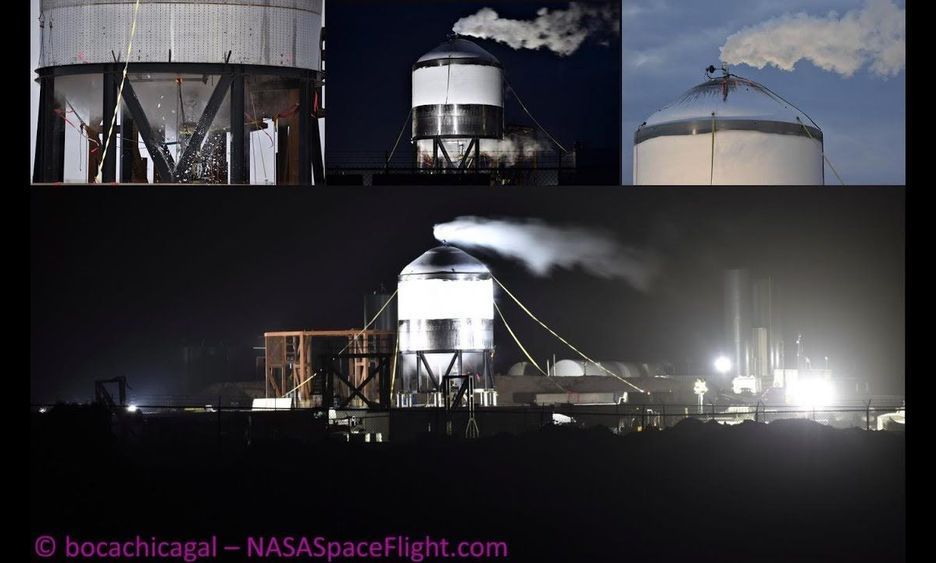
SpaceX’s newest prototype of its Starship Mars-colonizing vehicle just passed a crucial pressure test, potentially paving the way for more ambitious trials in the near future.
Starship version SN2 survived a cryogenic pressure test late Sunday (March 8) at SpaceX’s South Texas facilities, company founder and CEO Elon Musk said. You can see a video timelapse of the test from Starship watcher Mary BocaChicaGal here for NASASpaceflight.com.
Mar 10, 2020
A tiny area of the brain may enable consciousness, says “exhilarating” study
Posted by Kelvin Dafiaghor in category: neuroscience
Mar 10, 2020
Can a low-carb diet reverse brain aging?
Posted by Kelvin Dafiaghor in categories: life extension, neuroscience
A new study shows that the effects of aging appear in the brain can appear in your 40s. Cutting carbohydrates may protect you, though.
The IAmTranshuman (ist) web site is about the stories of transhumanists, from professors to artists and everything in between from all walks of life. IAmTranshuman is about helping humanity grow and be more then what we were through the responsible use of technology.
